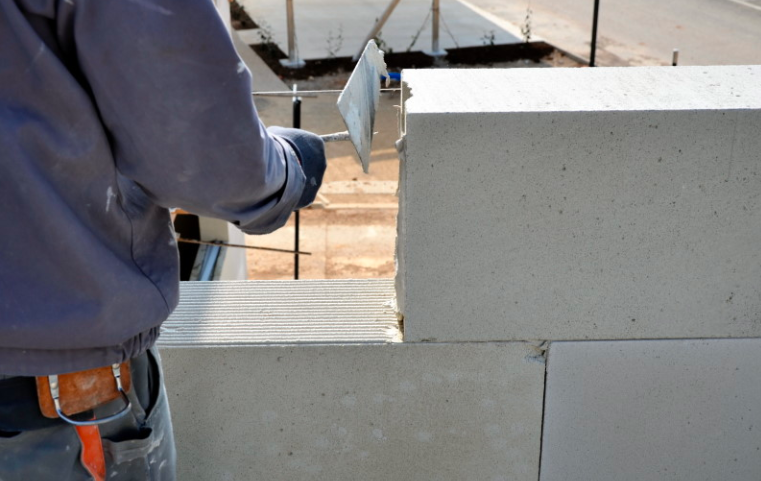Today in France, almost 80% of new house constructions are made using concrete blocks. This material is indeed very useful for the creation of the foundations and walls of a house.
However, France is one of the last countries still using concrete blocks rather than cellular concrete, sometimes also called siporex.
Each of these two materials has advantages and disadvantages, which explains why some builders and craftsmen prefer concrete blocks or cellular concrete.
To shed light on the properties of these two construction materials and to help you choose between cinder block and aerated concrete according to your expectations, we invite you to discover their respective advantages and disadvantages.
What you need to know about breeze blocks
Cinder block is a porous material (cut stone) in the shape of a parallelepiped and occupying the entire thickness of a wall. It is made up of 80% stone (gravel and sand) as well as cement and water, which makes it a natural and recyclable building material.
The dimensions of a standard block are 20 cm in length, 50 in width and 20 cm or 25 cm in height. The thickness of the concrete block varies according to its use. To create a wall, the concrete blocks are mounted on top of each other using mortar (a mixture of cement, sand and water).
The advantages of cinder block
Cinder block is widely chosen as a building material for traditional new homes because it is inexpensive. Indeed, the main advantage of the breeze block is that it is very accessible and allows you to build at a lower cost while choosing a natural material.
The second advantage of cinder blocks is their longevity. Indeed, this material is both resistant to wear and bad weather, which makes it possible to build solid and resistant houses over time. The concrete block is therefore a good choice in regions experiencing severe weather or earthquakes.
Cinder block is also an easy to lay material which makes it easier for craftsmen and home builders.
Finally, cinder block is an incombustible material that can be used to build very fire-resistant houses.
The disadvantages of concrete blocks
On the other hand, the concrete block has some disadvantages explaining why cellular concrete is preferred to it in many countries.
The main drawback is its lack of performance in terms of thermal and acoustic insulation. Thus, it will be necessary to provide for the installation of insulation in a house built of cinder block.
What you need to know about aerated concrete
Coming from Sweden, cellular concrete is now increasingly popular as a building material for modern homes. This material is a mixture of lime, sand, cement, water and an aluminum powder allowing the concrete to capture the air in the form of small bubbles. Aerated concrete therefore has aerated properties.
Aerated concrete can be in the form of blocks, tiles or panels from 5 to 30 mm thick and in many sizes. Thus, it can be used for the construction of exterior walls, but also for the construction of partitions and ceilings.

The benefits of air-entrained concrete
Because of its airy appearance, cellular concrete has two very interesting advantages: the material is light and it is a very good insulator.
In fact, cellular concrete walls offer very good thermal and sound insulation. Thanks to the air microcells imprisoned and arranged in a homogeneous manner, the insulating lining is unnecessary, which saves money. Its very good thermal coefficient also minimizes the impact of temperature variations between the interior and exterior.
The lightness of cellular concrete is also an advantage, whether for laying and construction, but also for the transport of materials. In addition, cellular concrete can be cut with a simple saw, which facilitates custom cuts and the use of scraps. It also requires less mortar for assembly, which makes it less expensive to install than for a cinder block wall.
Finally, like breeze blocks, cellular concrete is a non-flammable material that limits the spread of fire and is ecological, because its production requires half the energy of the production of clay bricks, for example.
The disadvantages of aerated concrete
If cellular concrete seems to have more advantages than concrete blocks, it still has a major drawback: its price. Indeed, cellular concrete is more expensive than cinder block. This higher price is still to be compared with the savings made for the insulation of the house but also for the time saved during the construction site because the material is much more manageable.
Aerated concrete appears less resistant than cinder block, because over time cracks can appear with aerated concrete. Cellular concrete is also a more friable material than concrete block, which will require you to provide specific dowels to be able to seal an element to the walls. Finally, cellular concrete is subject to a health debate on the dangerousness of regular exposure to this material over the long term.
